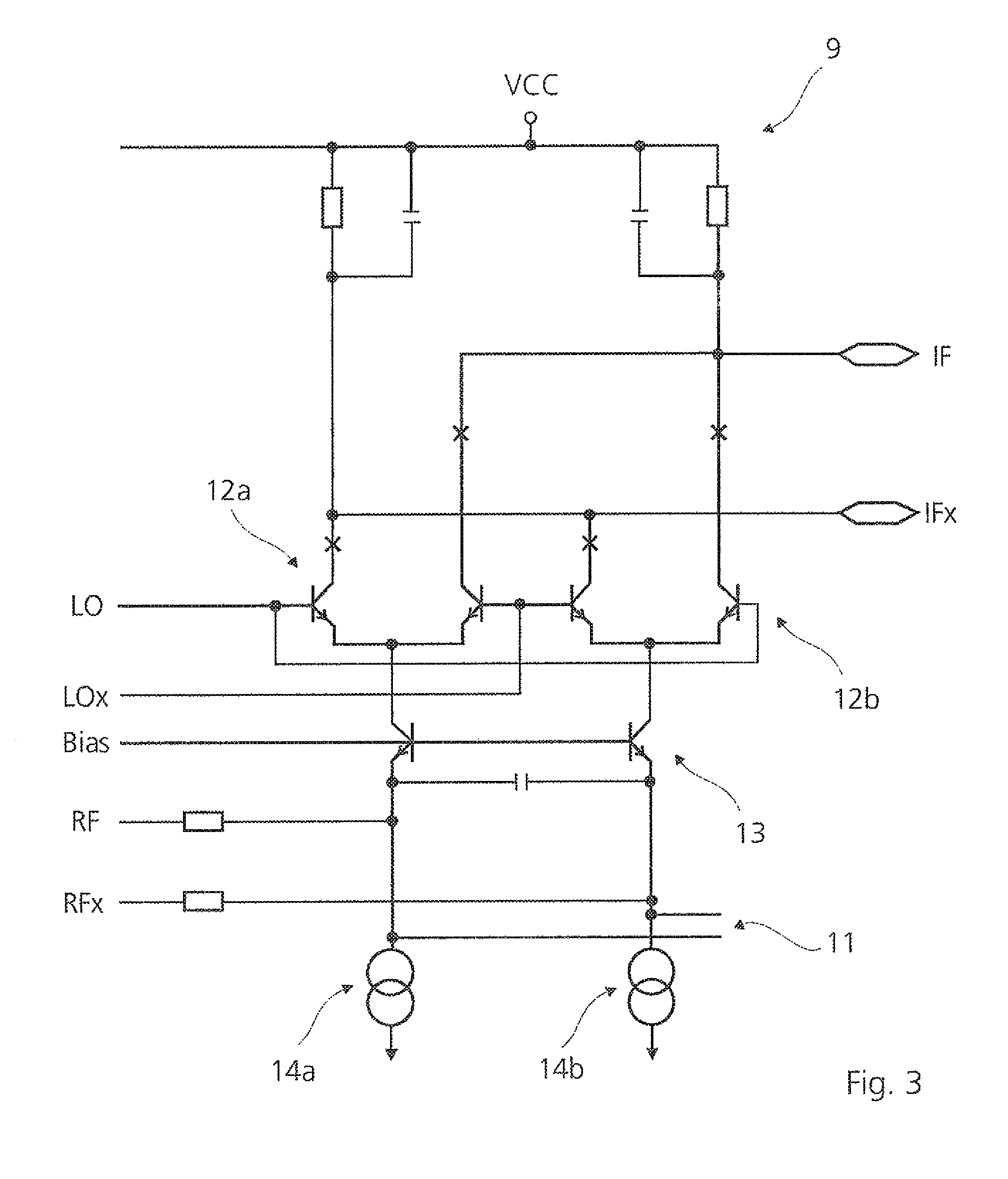Monostatic multibeam radar sensor device for a motor vehicle
a multi-beam radar and sensor device technology, applied in measurement devices, instruments, antennas, etc., can solve the problems of significant loss of isolation, significant phase problem, and inability to supply local oscillator power to the receiving channel, so as to broaden the angle estimation range and improve the performance of the participating system
- Summary
- Abstract
- Description
- Claims
- Application Information
AI Technical Summary
Benefits of technology
Problems solved by technology
Method used
Image
Examples
Embodiment Construction
[0018]FIG. 1 shows a monostatic multibeam radar sensor device 1 according to the present invention for a motor vehicle (not illustrated), including a housing 2. Housing 2 includes an antenna unit 3 and a mixer system 4, which form a receiver architecture 5 of multibeam radar sensor device 1 according to the present invention, including transceiving channels TX and receiving channels RX (see FIG. 2). A beam forming element designed as a lens 6 is also provided.
[0019]Transceiving channels TX and receiving channels RX of multibeam radar sensor device 1 result in a directional characteristic of multibeam radar sensor device 1, including radar beams or radar beam lobes B1, B1′ through B4, B4′, which add up to corresponding transmission sum patterns Σ, Σ′ (see FIGS. 4 and 5).
[0020]FIG. 2 shows receiver architecture 5 in greater detail, including antenna unit 3 and mixer system 4. A local oscillator signal LO is supplied via an input or a local oscillator supply. Transfer mixer units or tr...
PUM
 Login to View More
Login to View More Abstract
Description
Claims
Application Information
 Login to View More
Login to View More - R&D
- Intellectual Property
- Life Sciences
- Materials
- Tech Scout
- Unparalleled Data Quality
- Higher Quality Content
- 60% Fewer Hallucinations
Browse by: Latest US Patents, China's latest patents, Technical Efficacy Thesaurus, Application Domain, Technology Topic, Popular Technical Reports.
© 2025 PatSnap. All rights reserved.Legal|Privacy policy|Modern Slavery Act Transparency Statement|Sitemap|About US| Contact US: help@patsnap.com



